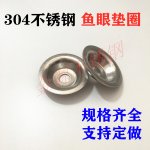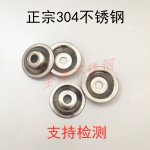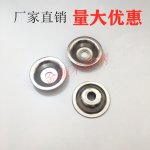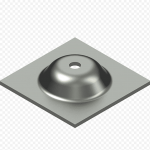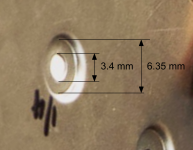I noticed this on a Chinese page, but although I know how useful this component would be, I don't know its name. It would be easier to find more of them if I knew. And yes, I tried.
I think it would be very useful in constructing metal enclosures for electronics, such as amplifiers, CD players, etc.
Another interesting would be a tool that presses a similar shape into sheet metal.
I think it would be very useful in constructing metal enclosures for electronics, such as amplifiers, CD players, etc.
Another interesting would be a tool that presses a similar shape into sheet metal.
Attachments
Last edited:
You MUST give us more, such as ... ummmm .... dimensions.
If 8/10 mm diameter they may be cup washers.
If 50/100 mm, unfinished Tweeter frames.
If 300/400 mm, car wheel hubs.
And so on.
Also a direct link to page and some ,legible text.
If 8/10 mm diameter they may be cup washers.
If 50/100 mm, unfinished Tweeter frames.
If 300/400 mm, car wheel hubs.
And so on.
Also a direct link to page and some ,legible text.
They are a type of cup washer. That particular style is used both as a centering washer and countersunk washer.
304 stainless steel cup washer
304 stainless steel cup washer
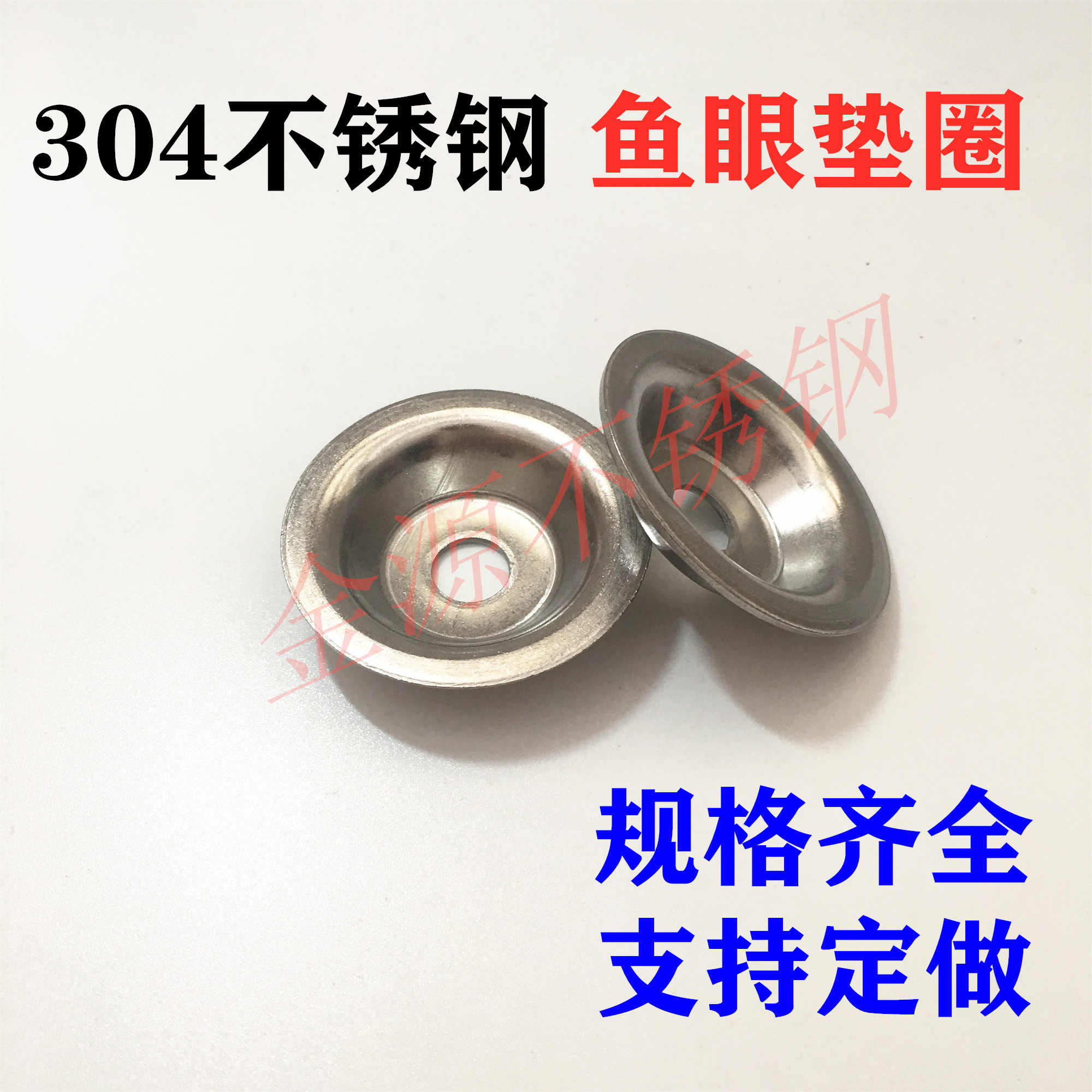
Available in all sizes
Accept make-to-order
304 stainless steel cup washer
Available in all sizes
Accept make-to-order
It is a cup washer.
Cup Washers Manufacturers & Suppliers Mumbai, India
It is also a centering washer.
Power Transformers Toroidal Chassis mount
Seastrom Manufacturing
Cup Washers Manufacturers & Suppliers Mumbai, India
It is also a centering washer.
Power Transformers Toroidal Chassis mount
Seastrom Manufacturing
Thanks, Cal.
By the way it is a flange cup washer.
Metal Stampings - Flange Cup Washer - HK Metalcraft
By the way it is a flange cup washer.
Metal Stampings - Flange Cup Washer - HK Metalcraft
Is it a kiwi or a CHinese gooseberry? Is it a faucet or a tap or a spigot? Is it an eggplant or an aubergine? U1 or IC1? D2 or CR2? COrd or cable?
What is this tool?
I have another question: What is the name of a tool that stamps that kind of tiny cup shapes around a hole?
There are small and handy metal punch tools that punch nice round holes through metal sheets, so I thought there may be very much resembling tools that stamp tiny cups into metal sheet.
The cup washer may be a good product, no doubt. On the other hand with a correct tool a hobbyist could avoid such washers, and the metal case would look cleaner without them.
That would be a simple tool for a simple task.
I have another question: What is the name of a tool that stamps that kind of tiny cup shapes around a hole?
There are small and handy metal punch tools that punch nice round holes through metal sheets, so I thought there may be very much resembling tools that stamp tiny cups into metal sheet.
The cup washer may be a good product, no doubt. On the other hand with a correct tool a hobbyist could avoid such washers, and the metal case would look cleaner without them.
That would be a simple tool for a simple task.
Attachments
They make a much neater way of putting screws into cabinets.
Looks much more professional that just screws in wood.
Looks much more professional that just screws in wood.
Punch and die sets.I have another question: What is the name of a tool that stamps that kind of tiny cup shapes around a hole?
Just as an example, these

cut custom washers out of sheet metal, the thin ones make the central hole,the larger ones cut the "donut" out of sheet metal, you want a set which has no sharp edges but is rounded (matching male and female sides of course) soy you push metal into nice rounded cups with the proper hole in the middle.
These are mounted in a mechanical press for high production:
h

Or a lever operated bench type one (what I use) for prototype or small scale work:
An externally hosted image should be here but it was not working when we last tested it.
Remember needed pressure is measured in TONS, no flimsy hand pressed thingies here.
You may kludge one having a male punch and female die set made at a metallurgical shop and using a 2 to 5 kg mace to do the pushing in.
Not kidding.
I really miss the old Peddinghouse at my old work.
Punched 25mm holes in 20mm thick steel with ease.
Boom, reload, boom....
Figge
Punched 25mm holes in 20mm thick steel with ease.
Boom, reload, boom....
Figge
Flat recess dimple die set
Thanks! That really helped.
After some googling I found a flat recess dimple die set which looks pretty much what I was searching.
Punch and die sets.
Thanks! That really helped.
After some googling I found a flat recess dimple die set which looks pretty much what I was searching.
You´re welcome.
Those you show are not exactly what you need, they are too large.
Out of the 4 die set only "usable" one for Electronics fabrication is the #10 screw one, and it can not be used with its own "pull" screw, but mounted in a press, at least a bench type lever type one such as the Baileigh one I showed .
And using pull screws is sloooowwww, only justified when cutting a tube socket hole, an IEC connector one and maybe a panel type fuse holder or large old style neon pilot light.
All machines can be bought but they are expensive, too much for a normal hobby/DIY use.
From a practical point of view, only machine worth buying is a bench drill press, capable of grabbing up to 1/2" drills.
You can use conical stepped drills for larger hole sizes and try yo use hardware (fuse holders, pilot lights, switches, etc.) which can be mounted in round holes as much as possible.
Square/rectangle/IEC, etc. require filing which is slow, cumbersome and never looks factory made ... unless a bezel can hide the handmade cuts.
Want flush screw heads?
Drill conical/tapered holes and matching screw heads, you can find flush combinations.
Or use a flatter version of conventional round heads for an approximation.
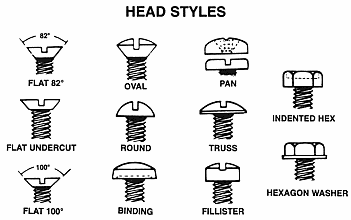
Those you show are not exactly what you need, they are too large.
Out of the 4 die set only "usable" one for Electronics fabrication is the #10 screw one, and it can not be used with its own "pull" screw, but mounted in a press, at least a bench type lever type one such as the Baileigh one I showed .
And using pull screws is sloooowwww, only justified when cutting a tube socket hole, an IEC connector one and maybe a panel type fuse holder or large old style neon pilot light.
All machines can be bought but they are expensive, too much for a normal hobby/DIY use.
From a practical point of view, only machine worth buying is a bench drill press, capable of grabbing up to 1/2" drills.
You can use conical stepped drills for larger hole sizes and try yo use hardware (fuse holders, pilot lights, switches, etc.) which can be mounted in round holes as much as possible.
Square/rectangle/IEC, etc. require filing which is slow, cumbersome and never looks factory made ... unless a bezel can hide the handmade cuts.
Want flush screw heads?
Drill conical/tapered holes and matching screw heads, you can find flush combinations.
Or use a flatter version of conventional round heads for an approximation.

Recession dimensions
I think that the 1/4 inch tool could be useful because M3 screw head diameter is usually 5.5 mm or 6 mm. But the height of the head could be something like 1.8 mm to 2.4 mm, and there may be also some special slim heads too. The screw head should disappear completely in the recession, so that the head could not accidentally scratch some random surface.
So the 6.35 mm diameter of the flat recession would be quite okay, but then the depth should be at least 1.8 mm. I don't know is it that much.
I think that the 1/4 inch tool could be useful because M3 screw head diameter is usually 5.5 mm or 6 mm. But the height of the head could be something like 1.8 mm to 2.4 mm, and there may be also some special slim heads too. The screw head should disappear completely in the recession, so that the head could not accidentally scratch some random surface.
So the 6.35 mm diameter of the flat recession would be quite okay, but then the depth should be at least 1.8 mm. I don't know is it that much.
Attachments
- Home
- Design & Build
- Parts
- What is the name of this little component?
